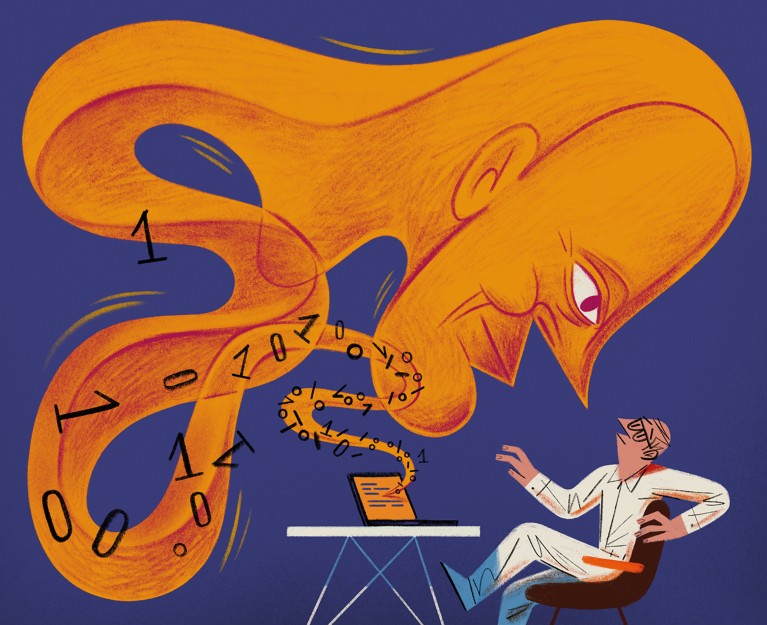
Illustration by Paweł Jońca
Access options
Access Nature and 54 other Nature Portfolio journals
Get Nature+, our best-value online-access subscription
$29.99 / 30 days
cancel any time
Subscribe to this journal
Receive 51 print issues and online access
$199.00 per year
only $3.90 per issue
Rent or buy this article
Prices vary by article type
from$1.95
to$39.95
Prices may be subject to local taxes which are calculated during checkout
Nature 614, 214-216 (2023)
doi: https://doi.org/10.1038/d41586-023-00340-6
Updates & Corrections
-
Correction 08 February 2023: This News feature misrepresented Scott Aaronson’s views on the accuracy of watermarking in identifying AI-produced text. Human-produced text might also be flagged as having a watermark, but the probability is extremely low.
References
Pividori, M. & Greene, C. S. Preprint at bioRxiv https://doi.org/10.1101/2023.01.21.525030 (2023).
GPT, Osmanovic Thunström, A. & Steingrimsson, S. Preprint at HAL https://hal.science/hal-03701250 (2022).
Nature Mach. Intell. 5, 1 (2023).
Glaese, A. et al. Preprint at https://arxiv.org/abs/2209.14375 (2022).
Thorp, H. H. Science 379, 313 (2023).
Kirchenbauer, J. et al. Preprint at https://arxiv.org/abs/2301.10226 (2023).
Singhal, K. et al. Preprint at https://arxiv.org/abs/2212.13138 (2022).

 ChatGPT: five priorities for research
ChatGPT: five priorities for research
 Abstracts written by ChatGPT fool scientists
Abstracts written by ChatGPT fool scientists
 How language-generation AIs could transform science
How language-generation AIs could transform science
 Tools such as ChatGPT threaten transparent science; here are our ground rules for their use
Tools such as ChatGPT threaten transparent science; here are our ground rules for their use
 Could AI help you to write your next paper?
Could AI help you to write your next paper?





